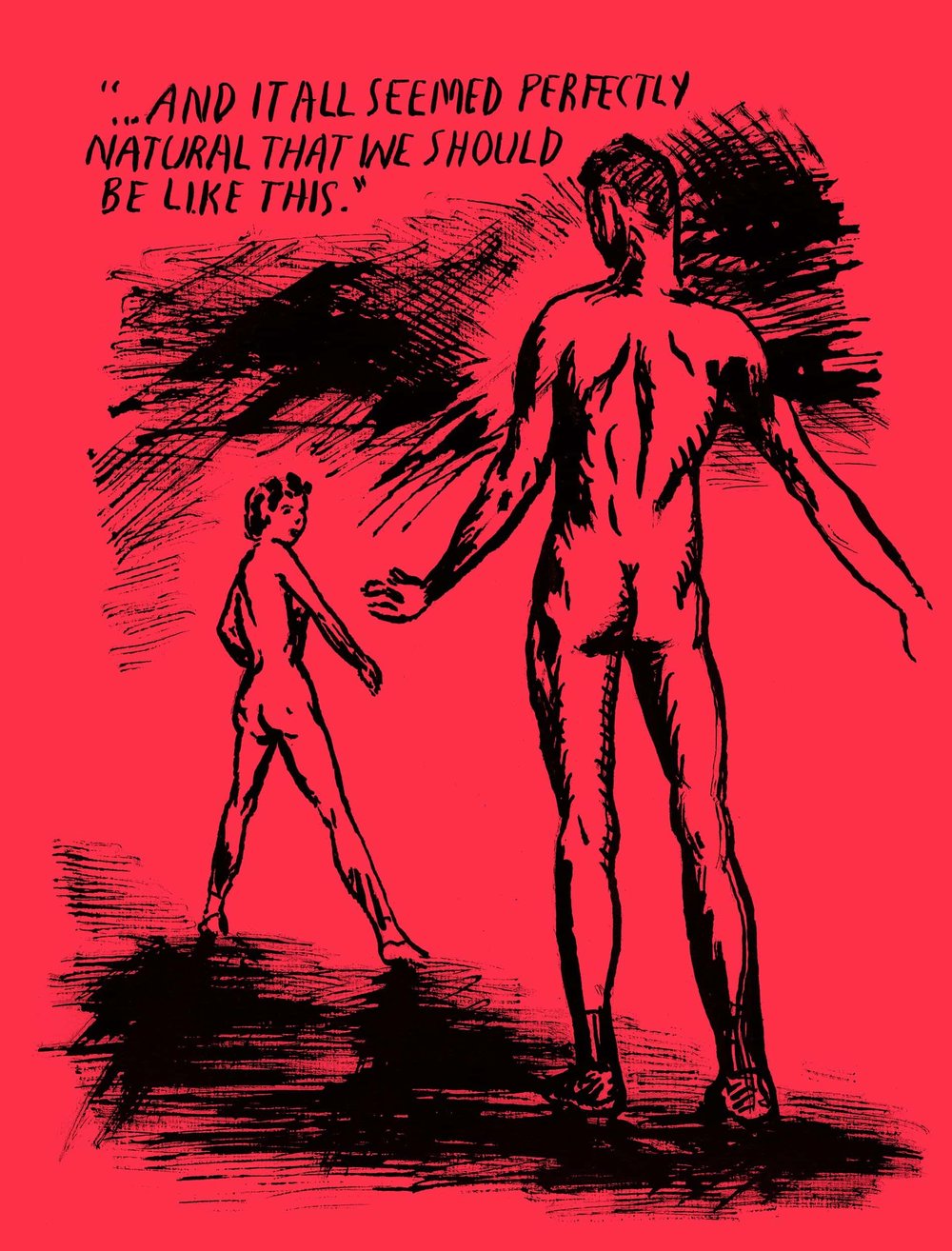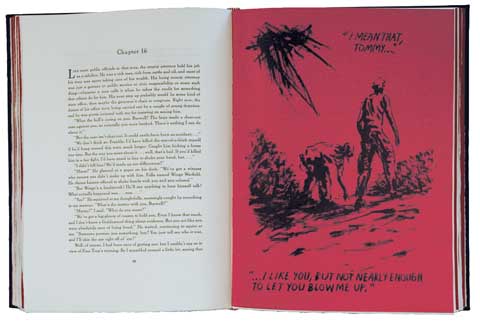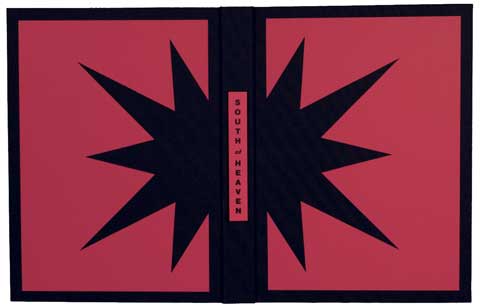South of Heaven
South of Heaven
By Jim Thompson, with an introduction by Arnold Hano, and with forty-four illustrations by the artist Raymond Pettibon, signed by the artist, November 2010. $500.00
Publication 90
ADD TO CARTArion Press is known for publishing titles that are unusual among deluxe limited edition books: not just “chestnuts of literature” but masterpieces from overlooked genres. Alongside the great works such as Moby-Dick, and Don Quixote, in this title the press has turned to “pulp fiction”, so named for stories and novels published in magazines and paperbacks, printed on cheap wood-pulp paper, meant for the entertainment of the masses. “Pulp” was a term of denigration. Jim Thompson (1906-1977) may be called “The King of the Pulps”, yet he was an original writer of the first rank. His writing is rank: odoriferous and raw and violent.
South of Heaven (1967) is not among Thompson’s best known works, but his long-time editor Arnold Hano declares it the last important book that Thompson wrote, important for being quite different from and more autobiographical than his earlier works.
“South of Heaven is based on the laying of a pipeline from an oil source in West Texas to Port Arthur on the Gulf in 1927,” Hano writes in his introduction to the Arion edition, “so real in its depiction of the horrific working conditions, it takes its place among the finest proletarian novels of this country. What Upton Sinclair did to the meat-packing workers, Thompson does to oil pipeline workers. It has cold-blooded murder and cold-blooded deaths that are not criminal, at least not by the usual standards of jurisprudence. Men die on the pipeline. That is their fate, in a world indifferent to that fate.
“And South of Heaven is a coming-of-age novel, Jim Thompson as a twenty-one-year-old, about to step out of the shadows of a derelict life and become the writer you and I know,” Hano concludes. (Hano is also the author of the classic baseball book, A Day in the Bleachers, released in an illustrated deluxe Arion Press edition in 2006.)
Artist Raymond Pettibon illustrates this edition with forty-four drawings, printed on red sheets interleaved in the text. Pettibon is one of the hottest contemporary American artists, whose lurid images have intrigued art collectors and curators ever since he burst onto the scene in the late eighties. He came out of the punk rock milieu in the late seventies and early eighties. Michael Kimmelman, the chief art critic for the New York Times, wrote in 2003 that Pettibon’s style has “a certain underground comic book messiness that is really graphic virtuosity in disguise”. Nearly all of Pettibon’s artworks contain texts or captions. Some are quotations but most are his own highly creative writings. For South of Heaven he has used excerpts cunningly chosen and elided from the book, combined with his own improvisations on themes in the novel.
Jim Thompson was born in Oklahoma, and then lived a peripatetic existence as a child before landing in West Texas. After high school, in 1926, Thompson became a hobo, a gambler and an itinerant laborer. Following two years of college he became a writer, and his first novel was issued in 1942. The fifties was Thompson’s most productive period, when he produced his best-known books: The Killer Inside Me (1952), Savage Night (1953), A Hell of a Woman (1954), The Nothing Man (1954), After Dark, My Sweet (1955). The Grifters (1963) and Pop. 1280 (1964), all of which were made into movies. In his last years in Los Angeles he hoped for Hollywood success, but those hopes languished in his lifetime. In recent years a revival of Jim Thompson has him ranked with the best authors America has produced.
The book has been designed and produced by Andrew Hoyem with the staff of Arion Press and Mackenzie & Harris. The type is Pabst Old Style, designed by Frederic W. Goudy in 1902-03, based on lettering he had done for advertisements for the Pabst Brewing Company in Milwaukee and named for its president, Capt. Frederick Pabst. The Monotype version was released in 1912. Since we lack the italic matrices, Bookman Old Style italic has been substituted. The type was composed and cast at Mackenzie & Harris and printed by letterpress. The text paper is German mouldmade Schiller. The illustrations are printed on a red sheet from the French Paper Company by duo-tone offset lithography in two shades of black.
FORMAT
The format of the book is quarto, 11-7/8 by 8-3/4 inches, 188 pages for the text plus 44 unnumbered pages for the illustrations, a total of 232 pages. The binding is Smyth-sewn, in a full black cloth cover with an explosive design, die-cut from red paper, attached to the front and back covers, with a red titling label on the spine, and with red endpapers. The edition is limited to 400 numbered copies for sale.
POSTAGE: Additional postage may apply; please inquire for details.
Share







